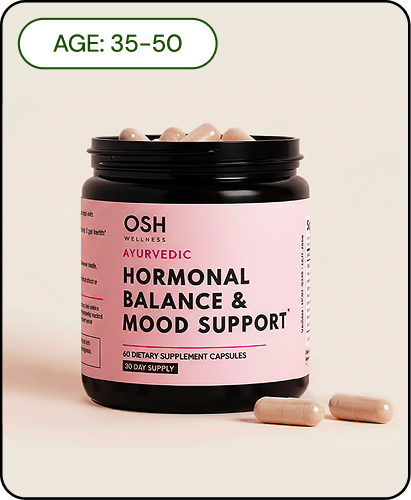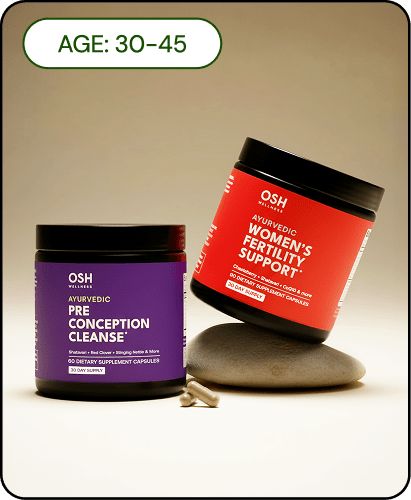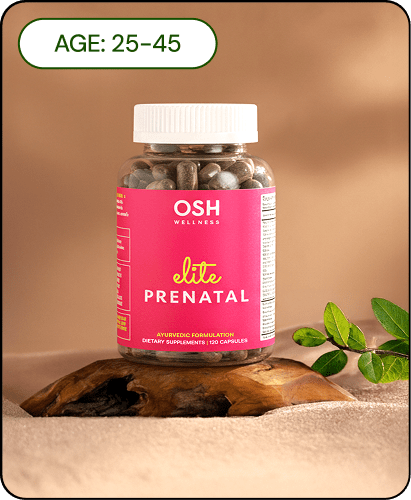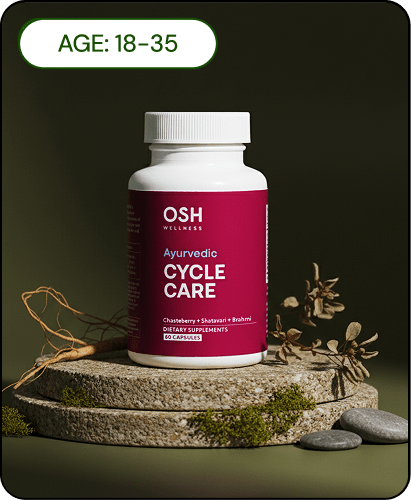Table of contents
As women transition through menopause, many experience hot flashes due to hormonal fluctuations. This article explores the efficacy of rose for hot flashes as a natural remedy within the Ayurvedic framework, specifically targeting these discomforting symptoms. With its cooling properties, rose in various forms like tea, essential oil, or water, offers a holistic approach to managing menopause. Here, we delve into the principles of Ayurveda, how rose balances the body's doshas, and practical ways to incorporate it into daily routines.
Understanding Hot Flashes

Hot flashes are a primary symptom of menopause, marked by sudden and intense sensations of heat affecting the face, neck, and chest. These episodes often include flushing, sweating, and increased heart rate, sometimes with anxiety or chills. Up to 80% of menopausal women report hot flashes, which can last from one to five minutes and recur sporadically or multiple times daily, interrupting sleep via night sweats.
The primary cause is a decline in estrogen, which disrupts the hypothalamus's role in regulating body temperature. This hormonal imbalance causes the body to falsely perceive overheating, triggering a cascade of symptoms.
Managing hot flashes often involves lifestyle modifications and natural remedies such as dietary changes, stress reduction, and herbal supplements. Among these, rose shows promise due to its traditional role in lowering internal heat and emotional unrest.
Ayurveda and Menopause
Ayurveda, India's ancient system of medicine, views menopause as a life phase requiring rebalancing of the body's energies, or doshas: Vata, Pitta, and Kapha. Menopause typically sees an increase in Vata, resulting in symptoms like dryness, anxiety, and sleep disturbances. Simultaneously, Pitta, associated with heat and transformation, can exacerbate hot flashes and irritability. [1]
To manage these symptoms, Ayurveda emphasizes approaches that calm excess Vata and cool down Pitta. This includes:
Emphasizing cooling foods and herbs
Implementing lifestyle practices that promote calm and consistency
Using herbs tailored to individual constitutions
Balancing the doshas not only alleviates symptoms but treats root causes, supporting long-term health [2]. These principles set the stage for the therapeutic use of rose, a herb known for its cooling and soothing benefits.
The Role of Rose in Ayurveda

In Ayurveda, rose is admired for its ability to cool the body and calm the mind. Often used during menopause, rose addresses both Pitta-related heat symptoms and emotional imbalance. Its effectiveness lies in its versatility; rose can be consumed, applied topically, or inhaled through aromatherapy.
Key forms and their benefits include:
Rose water: Internally and externally used to soothe heat and irritation[3].
Gulkand: A medicinal rose petal jam that balances hormones and supports digestion[4].
Rose tea: Supports emotional wellness and hydration.
Rose essential oil: Aids in relaxation, reducing anxiety, and promoting emotional resilience[5].
Some suggest the mildly estrogenic properties of rose may also help manage hormonal imbalances typical during menopause[6]. Moreover, rose harmonizes well with other Ayurvedic herbs like Shatavari and Ashwagandha, offering a broader relief profile.
Practical Applications of Rose
Integrating rose into everyday life can provide multi-dimensional support for menopausal symptoms. Here’s how:
Rose Tea: Steep dried petals for 5–10 minutes. This herbal infusion hydrates and delivers antioxidants. Thought to ease mood swings and reduce hot flash frequency[7].
Gulkand: Consuming a teaspoon daily may help with cooling the body and improving digestion. It’s traditionally believed to support emotional balance[8].
Rose Water: Used topically as a facial mist or added to water or desserts. Provides a refreshing experience, though clinical backing is limited[9].
Rose Essential Oil: Used in aromatherapy to enhance emotional well-being and reduce anxiety. It may also help modulate hot flashes when used consistently[10].
Each of these practices aligns with Ayurvedic treatments and underscores the cooling and balancing effects of rose, especially for Pitta-dominant imbalances experienced during menopause.
Expert Perspectives
Practitioners of Ayurveda view rose as a key herb associated with emotional and physical cooling. Rose features prominently alongside Shatavari and Ashwagandha in menopause-specific herbal protocols[11].
However, modern clinical studies provide limited support for rose's efficacy in reducing hot flashes. A review of herbal interventions for menopause found insufficient evidence to confirm rose's therapeutic impact[12]. Herbs like black cohosh and soy isoflavones are more extensively studied.
Though rose is often consumed as rosehip tea in natural health circles, scientific scrutiny around its efficacy for hot flashes remains minimal[13].
Lifestyle Recommendations for Managing Hot Flashes

Complementary to rose usage, Ayurvedic lifestyle strategies can further alleviate hot flashes:
Cooling Foods: Cucumbers, melons, and tender greens help reduce heat[14].
Hydration: Herbal teas with hibiscus or mint, and plenty of cool water[15].
Avoidance of spicy, oily foods and hot environments[16].
Mind-Body Practices: Yoga, sheetali breath, and meditation calm Vata and ease anxiety.
Abhyanga: Self-massage with cool oils like coconut can reduce tension and inflammation.
Routine: Regular meals and sleep schedules stabilize doshas and reduce symptoms[2].
These holistic strategies amplify the benefits of rose and reinforce the Ayurvedic idea that wellness stems from dynamic balance.
Relevant Products
Osh Wellness Hormone & Mood Support is an integrative wellness product designed to reduce hot flashes and hormonal imbalance. It contains rose extract among other natural ingredients, offering targeted support during menopause.
Conclusions
The Ayurvedic use of rose offers a gentle, holistic method for managing hot flashes during menopause. While modern science has yet to validate all claims, traditional applications and anecdotal reports support its efficacy in promoting emotional and physical balance. Incorporating rose through teas, gulkand, aromatherapy, and lifestyle practices empowers women to move through menopause with comfort and grace.
FAQs
What form of rose is most effective for hot flashes?
Rose water and gulkand are most commonly used in Ayurveda, though rose essential oil is popular for emotional symptoms.
How often should I drink rose tea for relief?
1–2 cups daily is generally safe. Monitor your body's response and adjust accordingly.
Are there any side effects of using rose products?
Rose is typically safe, though allergies or sensitivities can occur. Start with small doses.
Can rose oil be used safely during menopause?
Yes, when diluted properly for massage or used in aromatherapy. Avoid internal usage unless supervised.
Is there scientific evidence supporting rose for hot flashes?
While traditional texts endorse rose, substantial clinical evidence is lacking.
Sources
1: NIH - Aging Gracefully with Ayurveda
2: NIH - Ayurveda and Menopause
5: Aleva Botanica - Ayurveda and Aromatherapy for Menopause
6: Herbal Reality - Menopause: An Ayurvedic Perspective
7: Healthline - Tea for Menopause
8: Honey & Spice - Gulkand: Ancient Remedy Backed by Science
9: Caring Sunshine - Menopause and Rose Water
10: Healthline - Essential Oils for Menopause
11: Ayurveda College - Menopause
12: PMC - Efficacy of Herbal Remedies for Hot Flashes
13: Dr. Streicher - Eradicating Hot Flashes: Herbs & Spices
14: Ayurda - Menopause in Summer
18: Blue Lotus Ayurveda - Easy Menopause with Ayurveda






